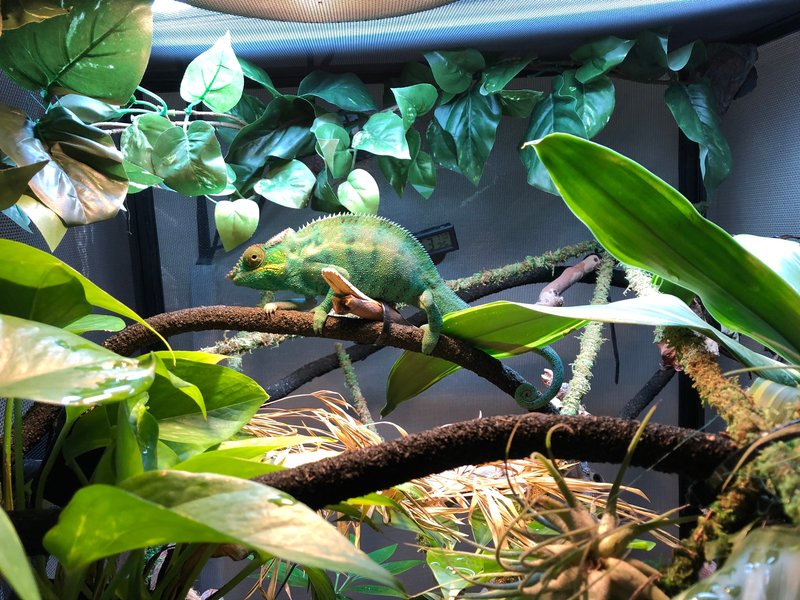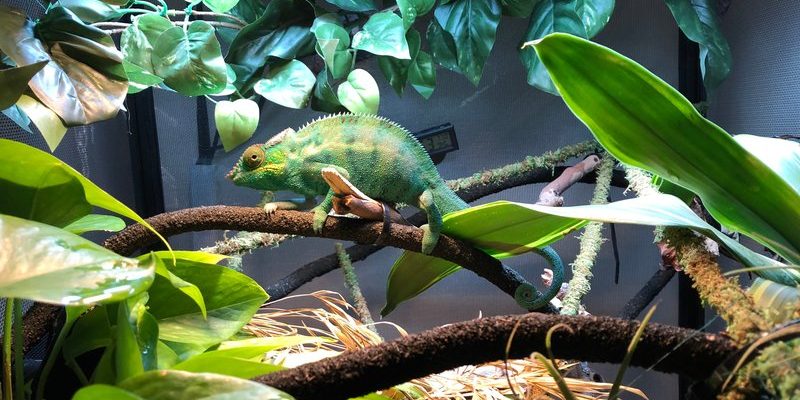
When you’re planning your chameleon’s home, it’s important to know that they need more than just a cage; they need a vibrant ecosystem. Think about incorporating elements that provide shade, climbing areas, and places to hide. This is where your choice of plants and decor comes into play. You want to create a space that feels natural and inviting—not just for your chameleon but also for you as the caretaker. So, let’s dive into the best plants and decor options to make your panther chameleon’s habitat a thriving environment.
Why Plants Matter in a Chameleon Habitat
You might be wondering, “Why should I bother with plants?” Well, plants serve multiple purposes in a chameleon habitat. First off, they provide essential cover for your chameleon. In the wild, these reptiles use foliage to blend in and avoid predators. Having the right plants will help your pet feel secure and less stressed.
Additionally, plants help maintain humidity levels, which is crucial since panther chameleons are used to a humid environment. They release moisture into the air through a process called transpiration. This means your habitat can benefit from a natural humidifier while also looking lush and vibrant. Plus, plants can improve air quality, making the entire habitat healthier.
Finally, plants create climbing opportunities. Panther chameleons are arboreal, which means they love to climb. Providing vertical space is essential for their physical and mental well-being. Your chameleon will appreciate the chance to explore, climb, and exercise, keeping them active and engaged.
Best Plants for a Panther Chameleon Habitat
When selecting plants, it’s best to choose those that are safe for your chameleon, easy to care for, and suitable for their specific needs. Here are some of the top picks:
- Ficus elastica (Rubber Plant) – This plant is hardy and can grow tall, providing excellent cover for your chameleon.
- Dracaena (Dragon Tree) – Another sturdy option, dracaena is great for climbing, and it adds a pop of color.
- Pothos – Known for its trailing vines, pothos is forgiving and grows well in various lighting conditions.
- Spider Plant – With its long, arching leaves, this plant offers hiding spots and is safe for chameleons.
- Hoya (Wax Plant) – These plants have thick, waxy leaves that can handle humidity, making them perfect for your setup.
Each of these plants has unique benefits, but they all share one common trait: they’re safe for your chameleon. When setting them up, make sure to arrange them in a way that encourages climbing and exploration. You might want to group plants together to create a more natural feel.
Setting Up Your Plants
Now that you have your plants ready, let’s talk about how to set them up. First, it’s crucial to use a substrate that retains moisture but also allows for drainage. A mix of soil, coconut coir, and orchid bark can work well for this purpose.
When planting, consider the height and growth habits of each species. Taller plants should be placed in the back, while shorter ones can go in the front to create depth. This arrangement not only looks good but also gives your chameleon various levels to explore.
Ensure that your plants get enough light. Most chameleons need a mix of UVB light, which helps them synthesize vitamin D3. A good rule of thumb is to place a UVB light above the enclosure and rotate your plants every couple of weeks for even growth.
Making Use of Décor
Plants are fantastic, but don’t underestimate the impact of decor on your chameleon’s habitat. The right decorations can enhance your enclosure by creating more climbing opportunities and places for your chameleon to hide.
Consider adding:
- Branches and Vines – Natural branches can be a great addition, allowing your chameleon to climb and explore.
- Hiding Spots – Items like cork rounds or bamboo tubes provide perfect spots for your chameleon to retreat when it needs a break.
- Moss or Leaf Litter – Adding a layer of moss or dried leaves not only looks good but also retains moisture, creating a more humid environment.
When placing decor, keep in mind the safety of your chameleon. Make sure everything is stable and won’t fall or tip over. You’d hate for your pet to get injured while exploring its awesome jungle gym!
Watering and Humidity Considerations
Watering your plants is essential for both their health and that of your chameleon. Plants like to drink, and if they’re happy, they’ll provide the needed humidity for your chameleon.
Here are some tips for keeping your habitat properly hydrated:
- Regular Mistings – Using a spray bottle to mist the plants and enclosure helps maintain humidity levels. It’s also a fun way for your chameleon to drink!
- Drip Systems – Consider installing a drip system that can provide water slowly over time, which mimics natural rainfall.
- Monitor Humidity Levels – Using a hygrometer will help you keep track of humidity levels. Ideally, it should be between 50% and 70%.
By maintaining humidity and hydration, you’ll create a comfortable environment that benefits your chameleon’s health and happiness.
Avoiding Toxic Plants
While many plants are great for a chameleon habitat, not all of them are safe. You must avoid toxic plants to ensure your pet’s safety. Some plants that are harmful include:
- Dieffenbachia (Dumb Cane) – Highly toxic and can cause serious damage if ingested.
- Philodendron – Also toxic, it can cause irritation and discomfort.
- Aloe Vera – While good for humans, it’s harmful to chameleons.
Always double-check the plants you’re considering to avoid any mishaps. Your goal is to create a healthy and safe environment, and staying informed will help you achieve that.
Final Touches for an Ideal Habitat
Once you have your plants and decor set up, take a step back and evaluate your creation. Does it feel lush and inviting? You might even want to toss in a few non-plant items, like decorative rocks or shallow bowls for water and food.
Also, remember that panther chameleons need somewhere to bask under a heat lamp. Position a basking spot carefully to ensure they have access to warmth while still providing shaded areas for comfort.
After all this, you’ll have a rich, stimulating environment for your chameleon to thrive in. Plus, it’ll be a conversation starter for anyone who visits!
Creating the perfect habitat for your panther chameleon is a rewarding journey. With the right plants and decor, you’re not just building a home—you’re creating a vibrant, healthy ecosystem. Enjoy the process, and watch your chameleon flourish in its new environment!

